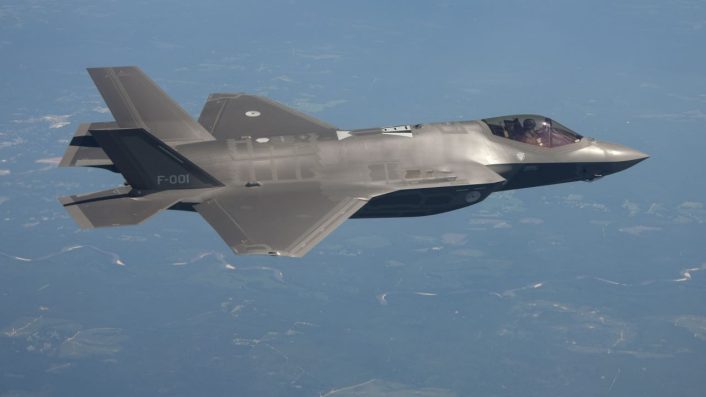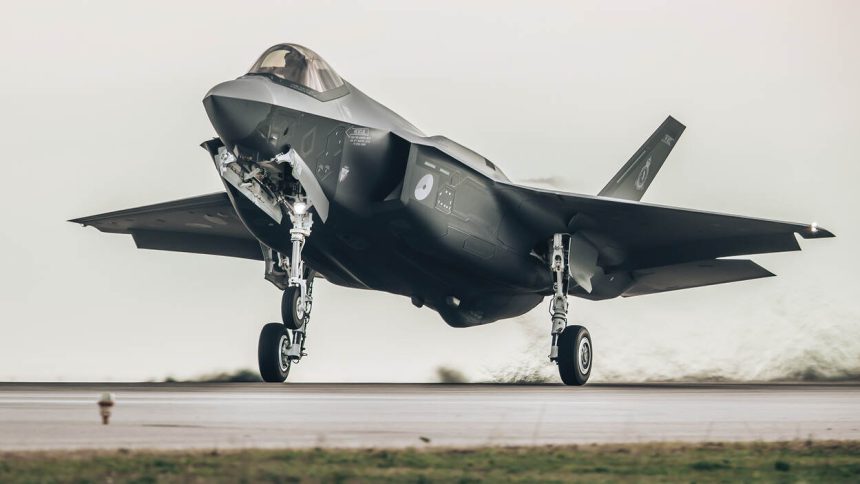The size of each of the three F-35 squadrons will swell and enhance readiness and ‘airstrike power.’
The Netherlands has announced plans to acquire additional F-35A Lightning II among other systems, including UAVs, NH90 helicopters, tanks, ASW (Anti-Submarine Warfare) frigates and counter-drone systems. The plans were revealed on Sept. 5, 2024, in a new defense planning document, for which an additional allocation of €2.4 billion ($2.7 billion) has been made. Aviation Week quoted a statement from the Dutch defense ministry, “Each year, approximately €1.5 billion will be invested in combat power.”
“New threats require action,” the Dutch government said, alluding to the security situation in Europe since Russia’s war in Ukraine since February 2022. Beside Russia, the move also reflects escalating tensions in the Middle East and the emerging flashpoint in the western Pacific, where China’s military assertion of its territorial claims shows Beijing is “trying to bend international rules in its favor.”
Dutch warship HNLMS Tromp was circled by Chinese JH-7 fighter-bomber and Z-19 light-attack reconnaissance-scout helicopter on Jun. 7, 2024 in the ECS (East China Sea). This was after it had conducted drills with the Indian Navy and the ROK (Republic of Korea) Navy in the preceding days. The latter was a part of maritime sanctions enforcement effort on North Korea. As The Aviationist reported, its ship-borne NH90 helicopter was also “approached” by the two Chinese aircraft then.
🪦 RIP RUSSIA 🪦
🇳🇱The Netherlands becomes the first nation to declare that its F-35 stealth fighters are now fully responsible for the nuclear strike role. pic.twitter.com/nv7K23Qohp
— Terror Alarm (@Terror_Alarm) May 31, 2024
Dutch F-35s
Under the new plan, the size of each of the three F-35 squadrons will swell to enhance combat readiness and effectiveness. RNL quoted senior journalist Roel Schreinemachers saying that the “additional F-35s should increase airstrike power.”
The RNLAF (Royal Netherlands Air Force) plans to acquire a total of at least 52 F-35As. Aerospace Global News said the latest plan presented by Minister of Defence Ruben Brekelmans on Sep. 5 calls for buying six more F-35s, taking the total fleet of the jet to 58 aircraft.
The first operational F-35s arrived in the Netherlands from the Cameri Final Assembly and Check Out (FACO) facility in northwestern Italy in 2019. The Netherlands became the eighth country, and the RNLAF the 12th military service, to declare Initial Operational Capability (IOC) for its F-35 fleet, the Netherlands Ministry of Defence and the RNLAF announced on Dec. 27, 2021.

The Aviationist had also reported how Dutch F-35As took over the country’s nuclear responsibilities within NATO replacing the F-16 Viper on Jun. 1, 2024, becoming the first European nation to switch to the stealth jet for this mission.
“This transition underscores the Netherlands’ ongoing dedication to NATO’s nuclear deterrence strategy, which is vital for the security of the Alliance and the Netherlands,” official Dutch said at the time.
“The core purposes of NATO’s nuclear capability are to maintain peace, prevent coercion, and deter aggression.” The RNLAF F-35As are DCA (Dual-Capable Aircraft) for NATO’s nuclear deterrence, and the jets meant for this nuclear mission would be based at the Volkel Air Base’s 313 Squadron. The base previously hosted the F-16s for the same role.
The other is the 322 Squadron assigned to the Leeuwarden Air Base. The stealth fighters will carry the B61-12 nuclear gravity drop bomb for the purpose. Inert units of the B61-12 were also drop tested from the F-35A in a series of tests between 2019 and 2020 at the Edwards AFB in California. The F-35 JPO (Joint Program Office) had released a series of images to that effect in Jun. 2020.
BREAKING!! The Netherlands buys more F-35s and NH90 helicopters to strengthen its defense capacityhttps://t.co/1T5NZZK4oA@Kon_Luchtmacht @dhcluchtmacht pic.twitter.com/xeLFgDDbEC
— Fly High Aeromedia (@FHAeromedia) September 4, 2024
Other defense plans
RNL has also identified more NH90 naval helicopters with “self-protection” features, an “anti-drone air-defense cannon” and “a high-energy laser system.” The unspecified number of additional maritime NH90s will support “more deployments by ships with an on-board helicopter,” AGN added. Whether the laser DEW (Directed Energy Weapon) is a part of the anti-UAV system or a separate AD (Air Defense) platform, to be produced locally, developed with NATO allies or bought outright, is not yet known.
The country is also looking at procuring an unspecified new unmanned ISR (Intelligence-Surveillance-Reconnaissance) platform “that can survive in the highest spectrum of violence and can therefore collect and share important data deep in enemy territory,” AGN added. “The existing MQ-9 is not suitable for this,” and the acquisition fulfills a “NATO Priority Target and a major shortfall within the EU.”
Increasing ammunition stockpiles to replenish the ordnance “shortages”; investments in “cyber power”; upgrading the Boxer armored vehicles with “heavier guns”; setting up a new tank battalion, and “scaling up the Dutch defence industry” has also been announced, according to RTL.
(The ammunition stocks) were already small and have shrunk even further due to donations to Ukraine. So these are substantial investments. However, it will still take years and many more investments are needed before our defense is really in order,” Schreinemachers added.









